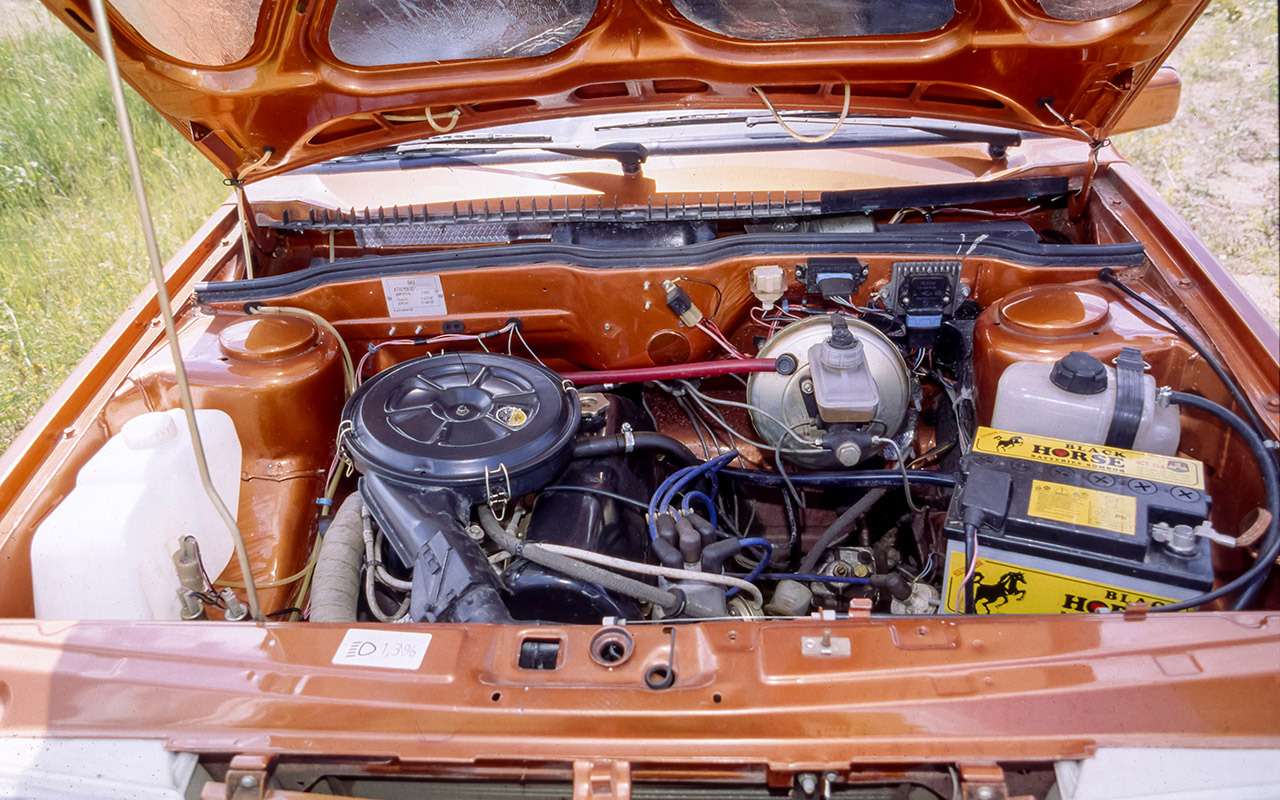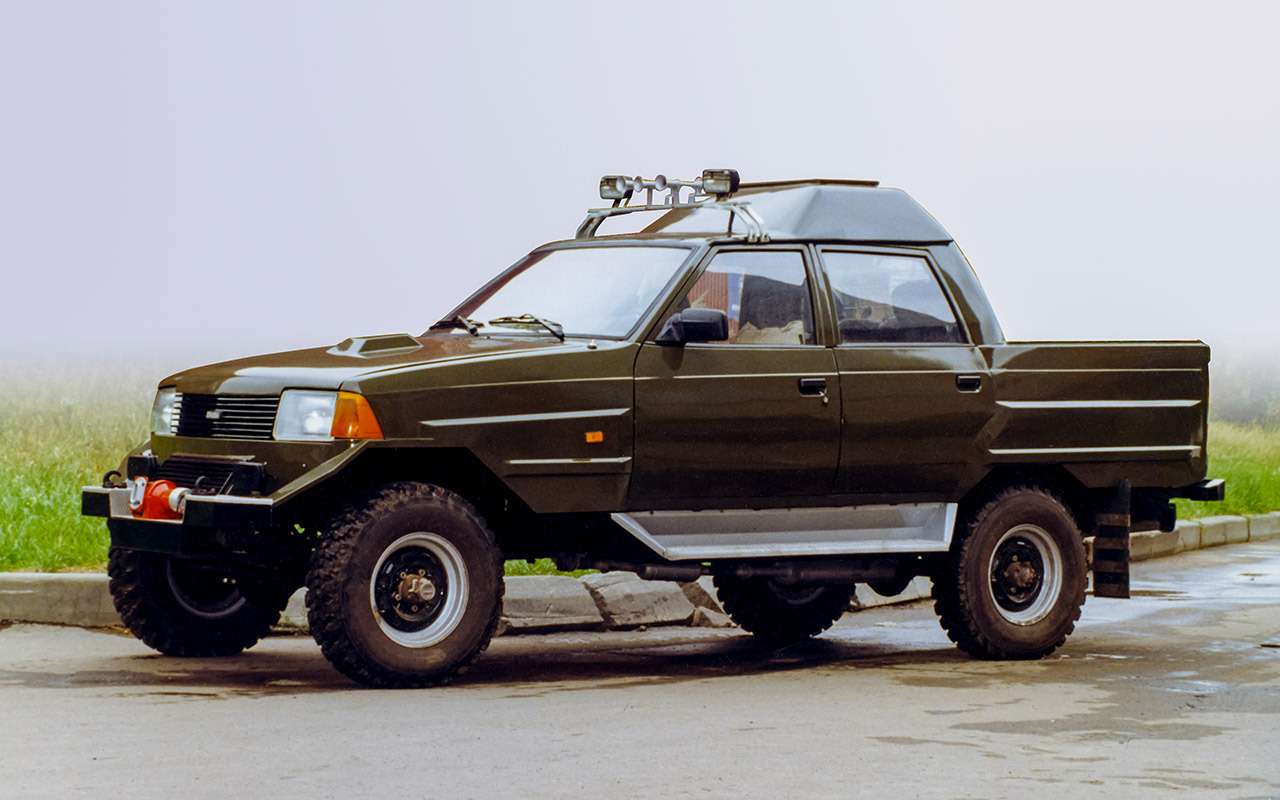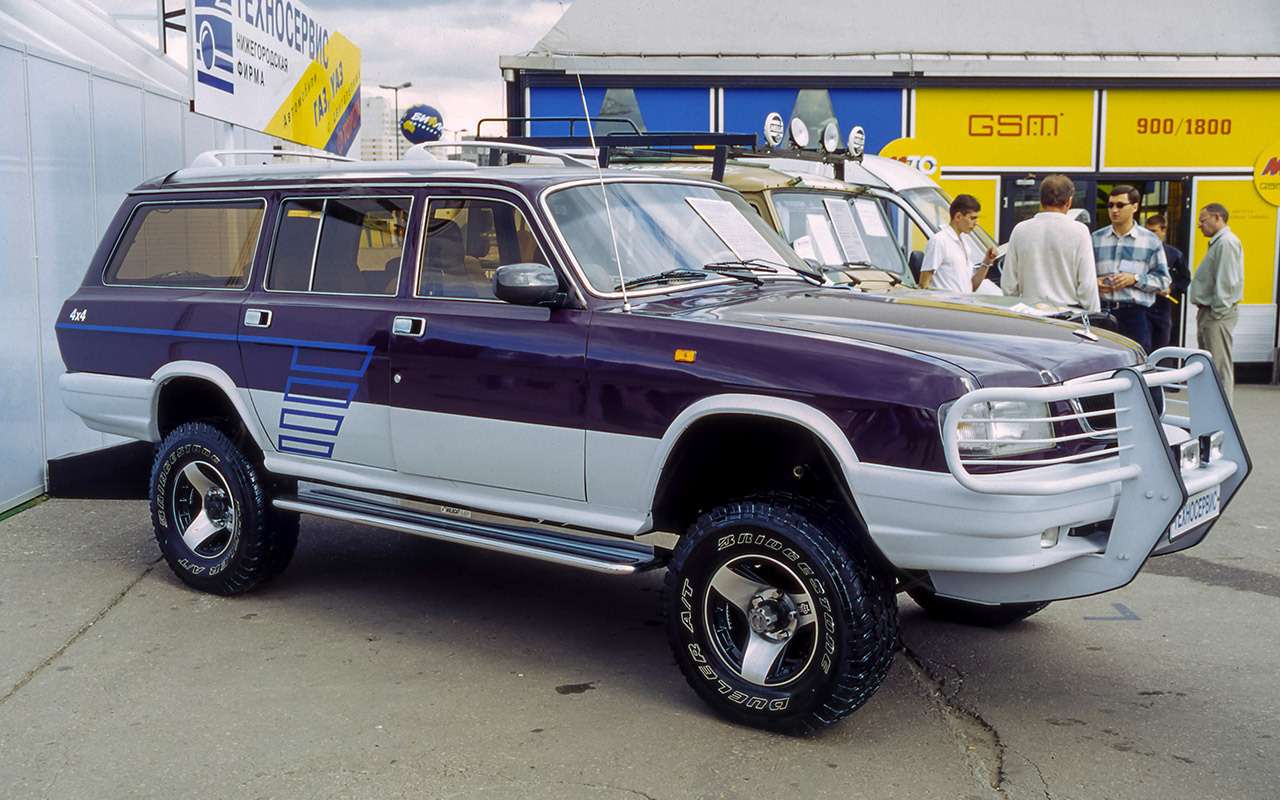About what changes UAZ SUVs underwent in the turbulent era of the nineties, we told here.
Tuned Niva can be admired in this publication.
People have always wanted something like a modern crossover.
There was no such term in the 1990s, but then tuning companies tried to make similar cars (and not just station wagons). Of course, at the nodes of the same Niva and UAZ – after all, there were simply no other cheap ones.
Samara + Niva = Tarzan
Samara is best known under the name Tarzan of the Lada-Consul company, whose small-scale production began in 1998.
Under the bodies of the VAZ-2108 or VAZ-2109, frames with Niva units were “abandoned”. The rear-wheel drive was similar to the front-wheel drive, so all Tarzan suspensions turned out to be independent, and the brakes were discs.
VAZ-210834 Tarzan – a hybrid of Samara and Niva with fully independent suspension and disc brakes.
A comfortable body was combined with a ground clearance of 220 mm. The machines were equipped with longitudinally mounted engines with a working volume of 1.7 liters and 1.8 liters respectively, with a development of 80 liters respectively. of. and 88.5 liters. of. The declared maximum speed is 157-160 km / h, and acceleration to 100 km / h took 16-17 seconds.

Later the design was adapted to the station wagon VAZ-2111-90 – the car was called Tarzan-2.

Izhevsk Fabula
Something similar appeared in Izhevsk, thanks to the tuning company Norma-Avto. By the way, the idea of connecting rear, front or all-wheel drive to the body of the IZH‑2126 was already laid at the design stage of the car.
And at the very beginning of the nineties, an original transfer case without a reduction gear was coupled to the UZAM or VAZ engine and the standard Omsk gearbox. A hard tunnel was placed between it and the gearbox, taking into account the experience of driving the Niva with its almost incurable vibrations. There was a standard live axle at the rear and a Niva gearbox with Niva shortened drives attached to the subframe at the front.
We tried several domestic engines: a 1.6-liter VAZ-2106, a 1.7-liter carburetor from Niva, a 1.8-liter VAZ-2130 engine and even a VAZ-21084 engine from the Samara- family – an 84 hp 1.6-liter installed in IZH‑2126 Oda longitudinal.
The main pairs of the front and rear gearboxes were made the same – 3.9, in the front drives they used hinges from the VAZ-2108. They worked in two directions simultaneously, assuming both road and off-road versions.

In the late 1990s, the plant itself took care of small-scale production of IZH‑2126 4 × 4. The basic, simplest and cheapest was IZH-2126-060 with a transfer case without downshifting and UMPO (UZAM)-331 or VAZ-21213 carburetor engines. Version 2126–062 was equipped with a VAZ-2106 engine and a transfer case with a reduction gear.
Finally, they also announced a modification of IZH-2126-063 on 14-inch wheels, with an independent rear suspension and a 1.8-liter VAZ injection engine with a volume of 84 liters. of. But this version, as well as four-wheel drive station wagons and pickups with VAZ-21213 engines and a 63-horsepower VAZ-343 diesel engine, which were tried to set up production at the Barnaultransmash plant, never went on sale.
And IZH‑2126–060 and IZH‑2126–062 could be purchased in the early 2000s. As our tests showed, in comparison with the Niva VAZ-21214, such an IZH gained a little in handling and lost about the same in cross-country ability.
And Volga!
An off-road version has even been made of the Volga. By the way, in Soviet times for the authorities, including General Secretary Leonid Brezhnev himself, a passionate fighter, several GAZ-24-95 sedans were created on UAZ-469 nodes.
Something similar, but based on the GAZ-310221 station wagon, was offered by the Nizhny Novgorod company Technoservice.
For the all-wheel drive Volga with the appropriate design and richer interior trim, they offered not only the Zavolzhsky 130-horsepower 16-valve engine, but also a wide selection of Toyota gasoline and diesel engines.
Similar cars, including those with a sedan body, were also built by smaller firms, including the Vishnyaki design center. But these machines were not even certified.

Muscovite pickups
Muscovites-2141 tuning firms were less common than other cars. However, the Moskvich‑2335 pickup inspired craftsmen to experiment off-road.
In 1997 the company made Spektr within the walls of NAMI Grenadier pickup on UAZ chassis and with a 105 hp ZMZ engine. Load capacity – 750 kg.


Much more exotic Moskvich – called a pickup T-134 Tachanka. From Moskvich in it is only the base of the body. The chassis is elongated from the UAZ-3151, and the engine is a 120 hp V8 from the GAZ-3307. It is clear that the creators of Tachanka were inspired by huge American pickups.
None of these projects found investors.
***
The romance of off-road tuning started to fade way back in the 2000s. The demand for such equipment is small, so sales do not cover costs, including to overcome the obstacles of an unprecedentedly overgrown bureaucracy.
Of course, there will always be enthusiastic craftsmen, but that bright feast of unusual interesting designs will no longer exist. It seems that this is no longer necessary, but it remains a pity …
- 10 iconic cars of the country from Tsarist times to the collapse of the USSR are here.
- “Behind the wheel” can be read and In contact with.
In the late 1990s, when few people knew the word “crossover”, Za Rulem magazine conducted a poll on the most desirable car. Readers unanimously voted not for an SUV, but for an all-terrain vehicle – why not a crossover!






